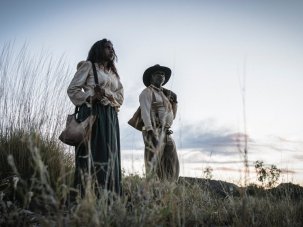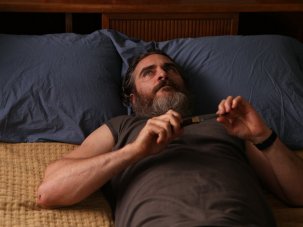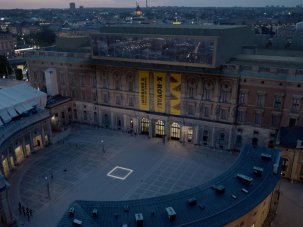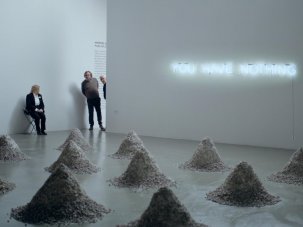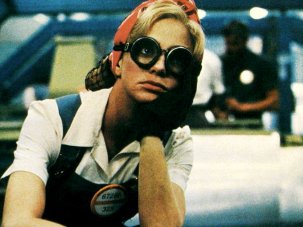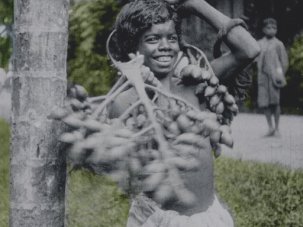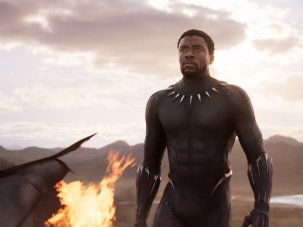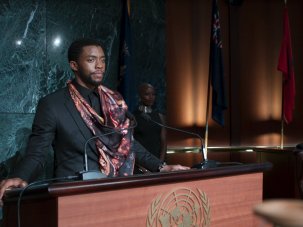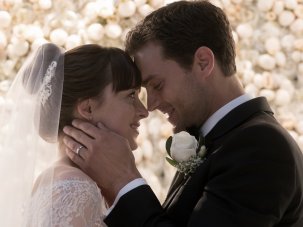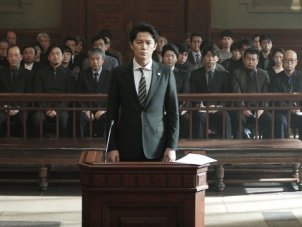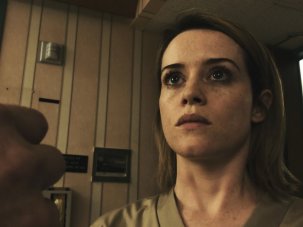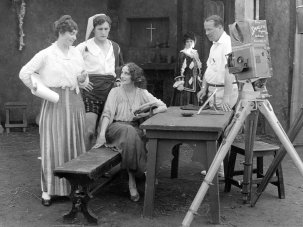
Our April issue returns to perennial cinephile favourite Wes Anderson, whose newest film, Isle of Dogs, is another stop-motion animation in the manner of Fantastic Mr. Fox (2009), this time set in a futuristic, dystopian Japan. Nick James sat down with Anderson, along with co-writers Roman Coppola, Jason Schwartzman and Kunichi Nomura, following the film’s premiere in Berlin, where he revealed a number of Isle’s inspirations, particularly citing Akira Kurosawa’s ‘city films’ such as Drunken Angel (1948), High and Low (1963) and, appropriately, Stray Dog (1949).
Posted to subscribers and available digitally 5 March
→ Buy a print issue
→ Access the digital edition
→
On UK newsstands 8 March
He also stresses the importance of traditional Japanese art to the film, noting “in New York we went to the Met museum… where they have the Hokusai and the Hiroshige prints. Those were a big influence on the movie. That kind of imagery became something we referred to all the time,” something reflected in the characteristically meticulous ‘Anderson-esque’ compositions in Isle of Dogs, which here frequently suggest woodblock paintings.
Another rather painterly new film is the Australian western Sweet Country by indigenous filmmaker Warwick Thornton, which details the country’s turbulent, often unmentioned history with racism and violence through the story of an indigenous farmhand couple on the run, suspected in the murder of a white man. Interviewed by Trevor Johnston, Thornton talks about the importance of telling these stories for him as well as the indigenous actors involved, saying of the cast, “they’re from the tribes, so the history lessons we’re dealing with here, their people have been through that… This is your family’s story, it’s really important that we tell it.” He adds, “Indigenous filmmakers, not only in Australia, now have a voice and the world is listening, because people want to hear a different opinion on the past, the present, and maybe even the future.”
Also featured here is an interview with Lynne Ramsay about her film You Were Never Really Here, starring Joaquin Phoenix. The film, which centres on a suicidal ex-marine hired to rescue a young girl from a sex-trafficking ring, seems at first glance to be a major genre departure for the director, whose previous three features are mainly domestic dramas; but Leigh Singer reveals that it sticks closer to Ramsay’s strengths than it appears, and provides an opportunity for a creative watershed for the director, whose career has been plagued by abandoned projects and long gaps between films.
Ruben Östlund’s Cannes- and now Oscar-lauded The Square is also examined in this issue by Jonathan Romney, who had a chance to speak with the director about his art world satire. The film, Östlund’s follow-up to his lauded Force Majeure (2014), follows a “modish, dapper, impeccably high-minded and socially responsible” gallery director who is nonetheless “comically unglamorous” in how he deals with the various comic crises he encounters. Speaking on one of the film’s central themes, social shame, Östlund says, “Human beings have a really strong capacity for shame. We actually commit suicide rather than live with shame.”
In a more retrospective direction, Christina Newland uses the new documentary Bombshell: The Hedy Lamarr Story as a jumping off point to address the (often unsung) contribution of American women writers and producers during World War II. Newland points out that the departure of many men for the war effort left openings for as many women to fill their roles, allowing for such classics as the Catherine Turney-penned Mildred Pierce (1945), Virginia Van Upp-produced Gilda (1946) and more. Though they continued to face challenges in Hollywood, the opportunity of the war was able to launch many a career past the glass ceiling.
Also in these pages is a rundown of the precarious situation and uncertain future of London’s Cinema Museum, the impending closure of which threatens the preservation of a wealth of rare film memorabilia. Plus, a glance at the unexpectedly intertwined but sharply, surprisingly contrasted life stories and career trajectories of actresses Lena Horne and Susan Hayward. And, of course, a quick rundown of the highlights of this year’s Berlinale slate courtesy of Nick James.
Our reviews section catalogs and critiques this month’s theatrical releases, highlighting in particular Black Panther, The Third Murder and Unsane, and in home entertainment we take an opportunity to celebrate some of the lesser-seen, late-career works by French director Henri-Georges Clouzot. We also look at some upcoming film books, including a thorough biography of the great but often overshadowed Michael Curtiz, as well as a invigoratingly philosophical examination of Vertigo (1958).
All this and much more besides…
Features
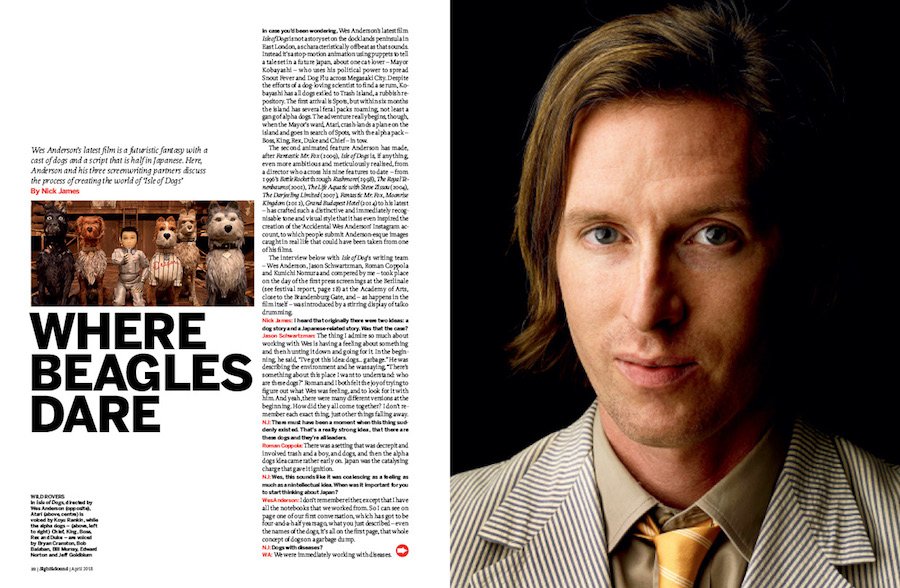
Where Beagles Dare
Wes Anderson’s latest film is a futuristic fantasy with a cast of dogs and a script that is half in Japanese. Here, Anderson and his three screenwriting partners discuss the process of creating the world of Isle of Dogs. By Nick James.
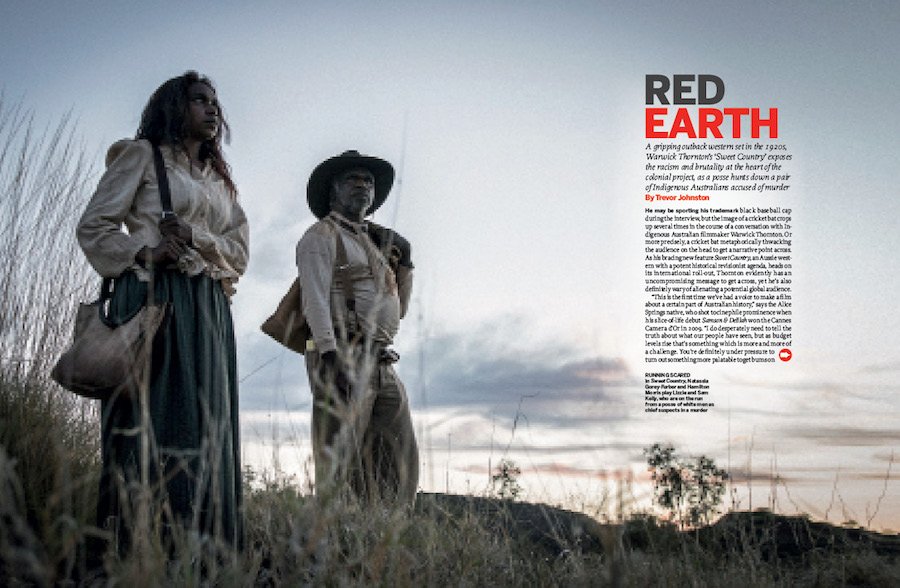
Red Earth
A gripping outback western set in the 1920s, Warwick Thornton’s Sweet Country exposes the racism and brutality at the heart of the colonial project, as a posse hunts down a pair of Indigenous Australians accused of murder. By Trevor Johnston.
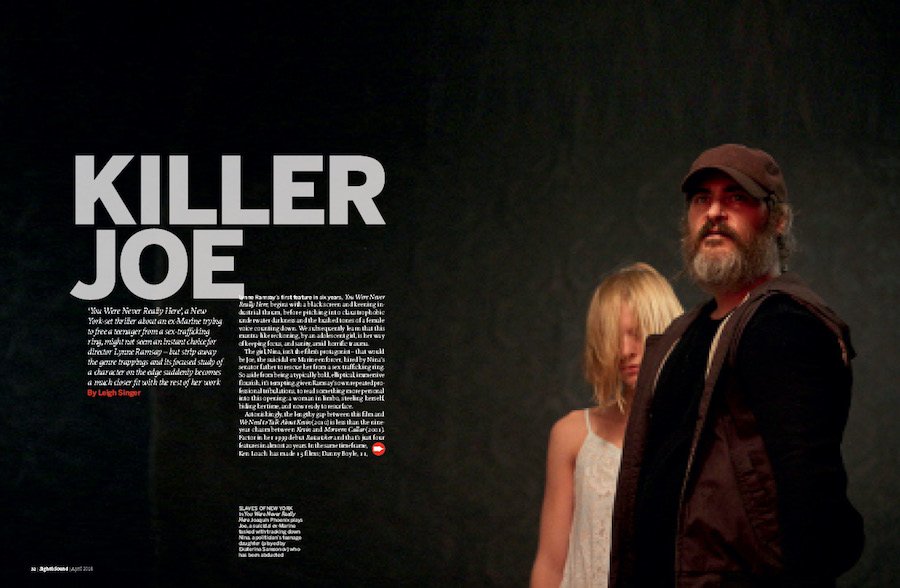
Killer Joe
You Were Never Really Here, a New York-set thriller about an ex-Marine trying to free a teenager from a sex-trafficking ring, might not seem an instant choice for director Lynne Ramsay – but strip away the genre trappings and its focused study of a character on the edge suddenly becomes a much closer fit with the rest of her work. By Leigh Singer.
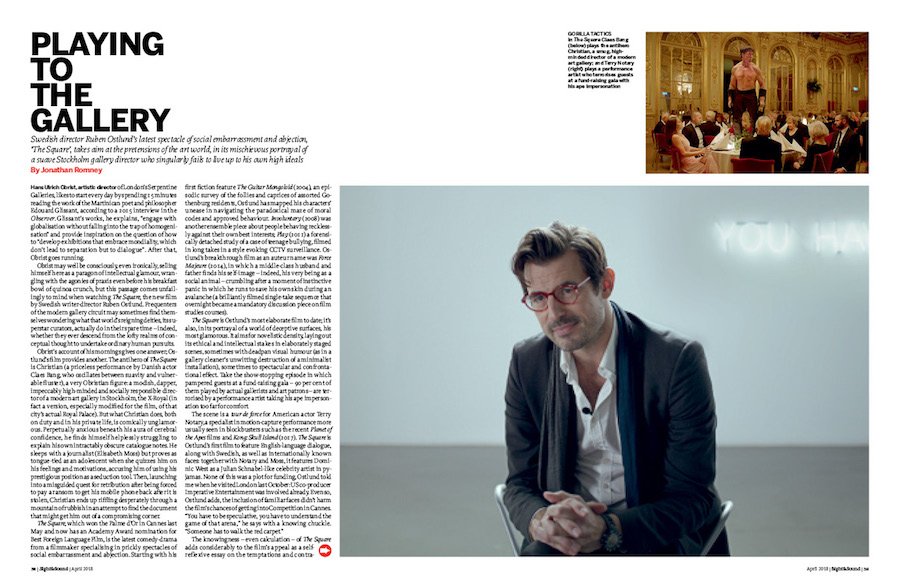
Playing to the Gallery
Swedish director Ruben Ostlund’s latest spectacle of social embarrassment and abjection, The Square, takes aim at the pretensions of the art world, in its mischievous portrayal of a suave Stockholm gallery director who singularly fails to live up to his own high ideals. By Jonathan Romney.
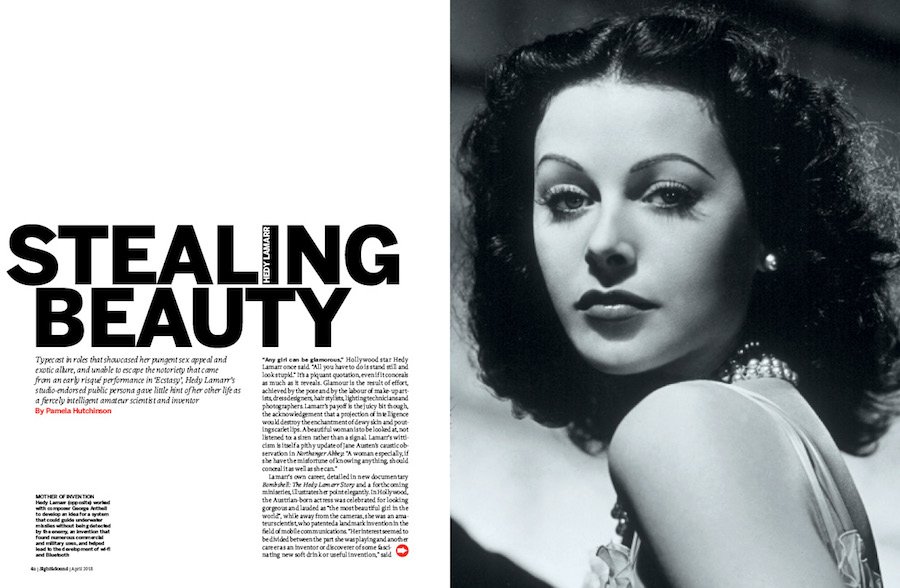
Stealing Beauty
Typecast in roles that showcased her pungent sex appeal and exotic allure, and unable to escape the notoriety that came from an early risqué performance in Ecstasy, Hedy Lamarr’s studio-endorsed public persona gave little hint of her other life as a fiercely intelligent amateur scientist and inventor. By Pamela Hutchinson.
+ The fortunes of war
Hedy Lamarr was not the only smart, ambitious woman in Hollywood in the 40s – and for many women behind the camera, the war years brought exciting opportunities. By Christina Newland.
Regulars
Editorial
Icy screen women commeth
Rushes
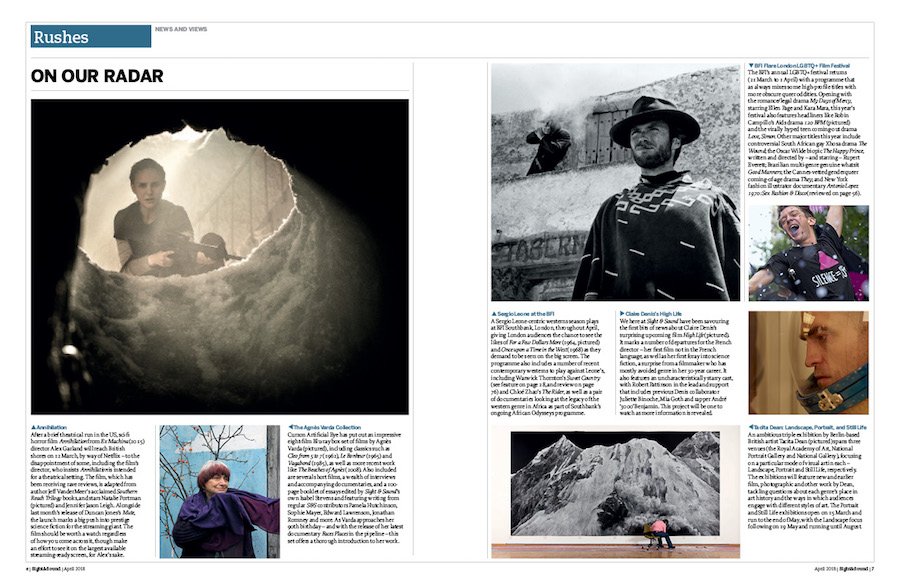
Our Rushes section
On our radar
Annihilation on Netflix, The Agnès Varda Collection on DVD, BFI Flare London LGBTQ+ Film Festival, Sergio Leone at the BFI, Claire Denis’s forthcoming High Life, and London exhibition-in-triplicate Tacita Dean: Landscape, Portrait, and Still Life.
Archive: The stuff of legend
The threatened sale of London’s Cinema Museum premises puts a rare collection of memorabilia – and a key community resource – at risk. By Matthew Harle and Jack Wormell.
The numbers: Hero venues
Charles Gant on individual venue performances at the US and UK box office.
Dispatches: Twin Peaks
The careers of Susan Hayward and Lena Horne offer a fascinating insight into 20th‑century America – and into the sidelining of women. By Mark Cousins.
Wide Angle
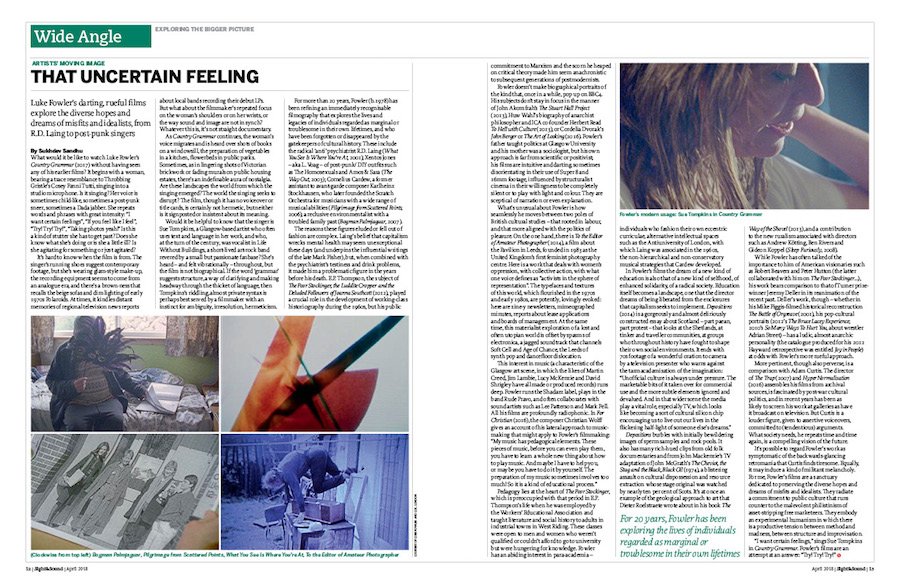
Our Wide Angle section
Artists’ moving image: That uncertain feeling
Luke Fowler’s darting, rueful films explore the diverse hopes and dreams of misfits and idealists, from R.D. Laing to post-punk singers. By Sukhdev Sandhu.
Primal screen: The colours of war
A new Peter Jackson project hopes to add immediacy to footage from World War I by colourising it – but what do we stand to lose? By Luke McKernan.
Festival: Think global, act local
In Rotterdam, heartland of globalised trade, the annual film festival gives pride of place to the small-scale and the local. By Kieron Corless.
Festivals
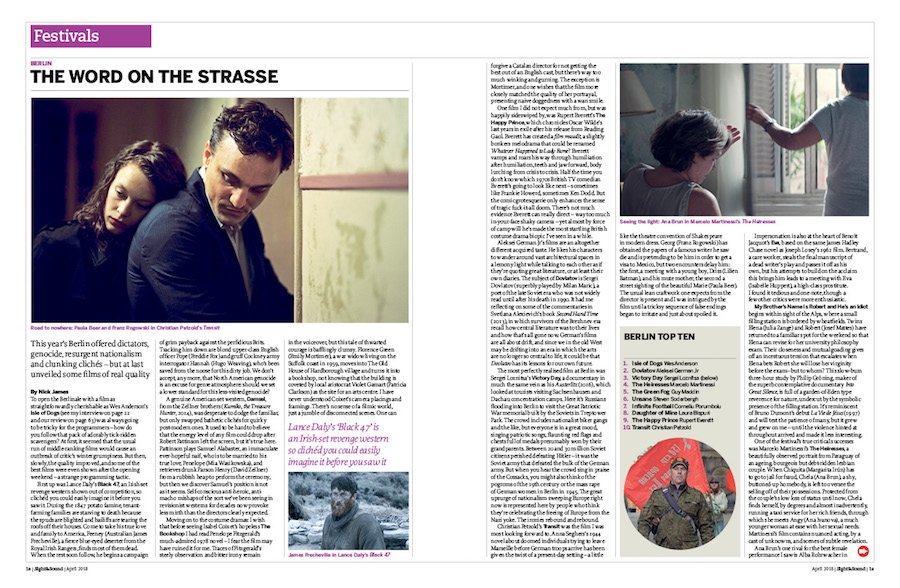
Our Wide Angle section
Berlin: The word on the strasse
This year’s Berlin offered dictators, genocide, resurgent nationalism and clunking clichés – but at last unveiled some films of real quality. By Nick James.
Reviews
Films of the month
Black Panther
The Third Murder
Unsane
plus reviews of
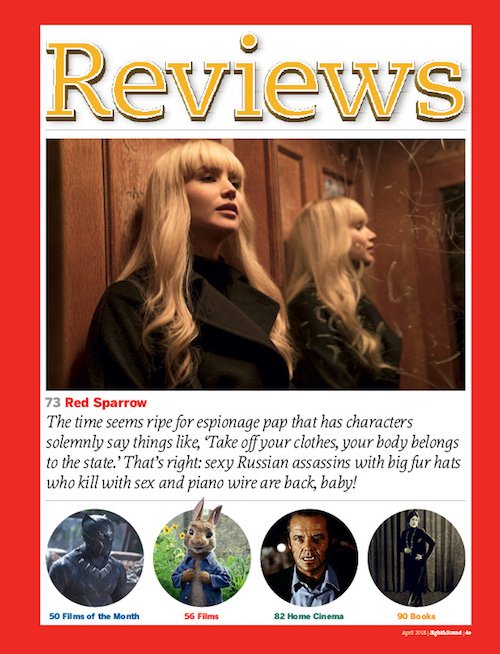
Our Reviews section
Antonio Lopez 1970: Sex Fashion & Disco
Around India with a Movie Camera
The Cloverfield Paradox
The 15:17 to Paris
Fifty Shades Freed
Gholam
Have a Nice Day
Here to Be Heard: The Story of the Slits
I Got Life!
The Islands & the Whales
Isle of Dogs
Journeyman
Mark Felt: The Man Who Brought Down the White House
Mary Magdalene
Maze Runner: The Death Cure
My Generation
My Golden Days
Padmaavat
Pad Man
Peter Rabbit
Proud Mary
Psycho Vertical
Red Sparrow
Scott and Sid
The Square
Status Update
Sweet Country
Tad the Lost Explorer and the Secret of King Midas
12 Strong
Westwood: Punk. Icon. Activist Winchester
You Were Never Really Here
Home Cinema features
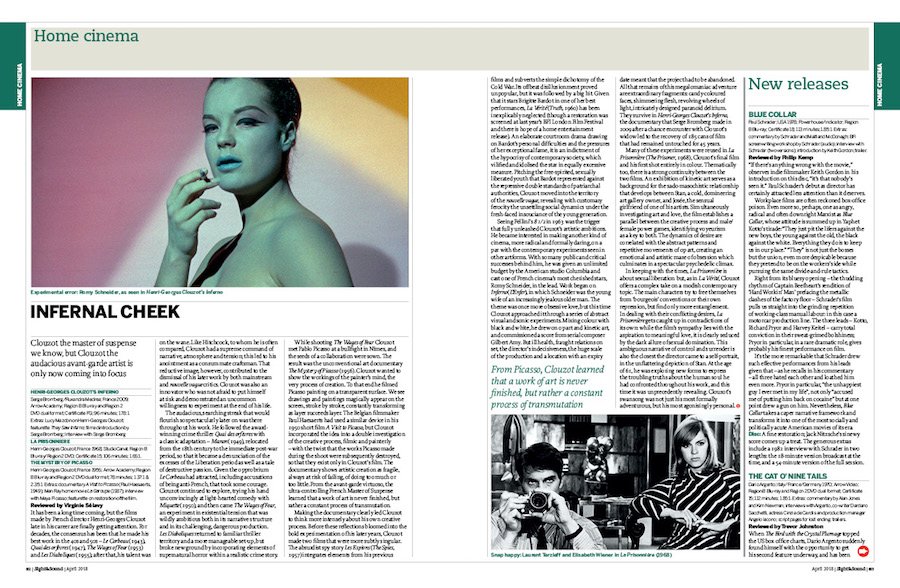
Our Home Cinema section
Infernal cheek: Henri-Georges Clouzot’s Inferno, La Prisonniere and The Mystery of Picasso
Clouzot the master of suspense we know, but Clouzot the audacious avant-garde artist is only now coming into focus. By Virginie Sélavy.
A fantastic woman: Films by Lois Weber (Shoes and The Dumb Girl of Portici)
Once regarded as one of America’s finest directors, Lois Weber was all but written out of film history. Now we can see what the fuss was about. By Pamela Hutchinson.
Lost and found: A Child in the Crowd
Gérard Blain’s autobiographical film about a young boy alone in occupied Paris is a disturbing, ambiguous puzzle. Reviewed by Ross McDonnell.
plus reviews of
Blue Collar
The Cat o ’Nine Tails
The Colour of Pomegranates
Goldstone
Magnificent Doll
Michael
Films by Mike Nichols: The Fortune/Wolf
Films by Peter Nichols: A Day in the Death of Joe Egg/The National Health
Night of the Living Dead
Orchestra Rehearsal
Something Wild
Television
The Main Chance, Ghost in the Water and Real Women. Reviewed by Robert Hanks.
Books
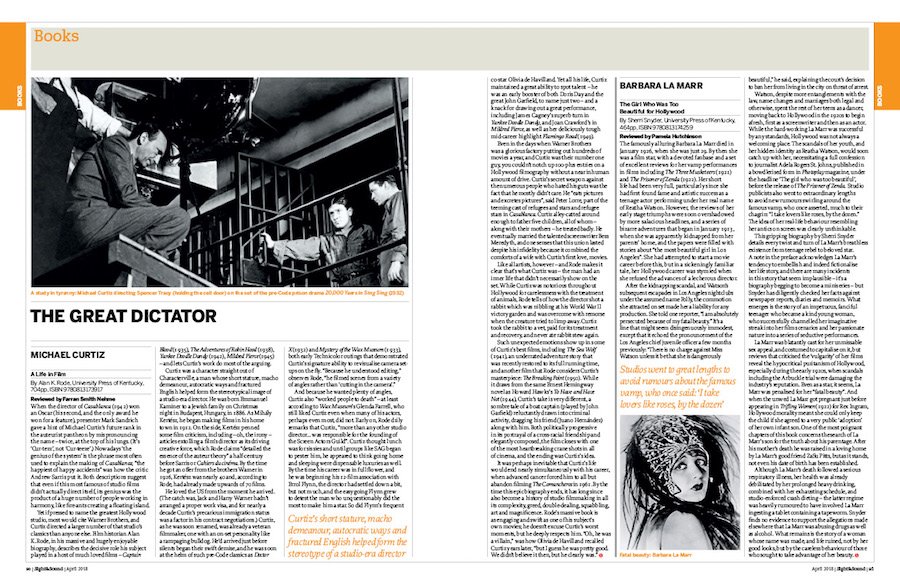
Michael Curtiz: A Life in Film by Alan K. Rode (University Press of Kentucky) reviewed by Farran Smith Nehme
Barbara La Marr: The Girl Who Was Too Beautiful for Hollywood by Sherri Snyder (University Press of Kentucky) reviewed by Pamela Hutchinson
Hitchcock and the Spy Film by James Chapman (I.B. Tauris) reviewed by Philip Kemp
The Philosophical Hitchcock: Vertigo and the Anxieties of Unknowingness by Robert B. Pippin (University of Chicago Press) reviewed by Nick James
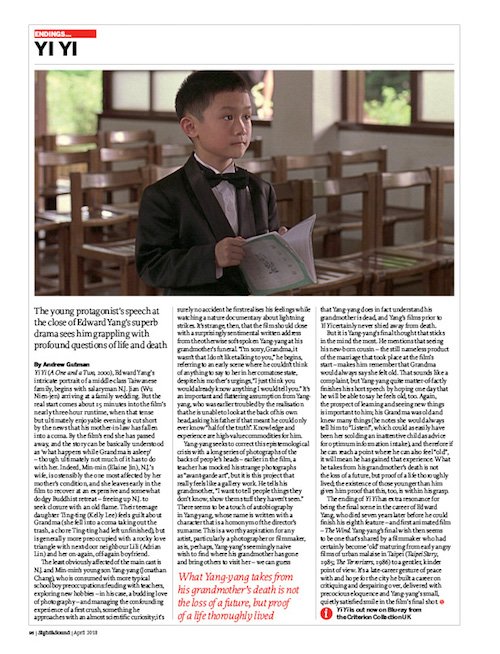
Our Endings section
Letters
Readers vs Mark Cousins vs Woody Allen and Roman Polanski
Subtitling services at heritage festivals
Filmmakers and their characters’ morality, from Blade Runner to Apocalypse Now
Endings
Yi Yi (A One and a Two)
The young protagonist’s speech at the close of Edward Yang’s superb drama sees him grappling with profound questions of life and death. By Andrew Gutman.
Further reading
-
The Digital Edition and Archive quick link
Log in here to your digital edition and archive subscription, take a look at the packages on offer and buy a subscription.





